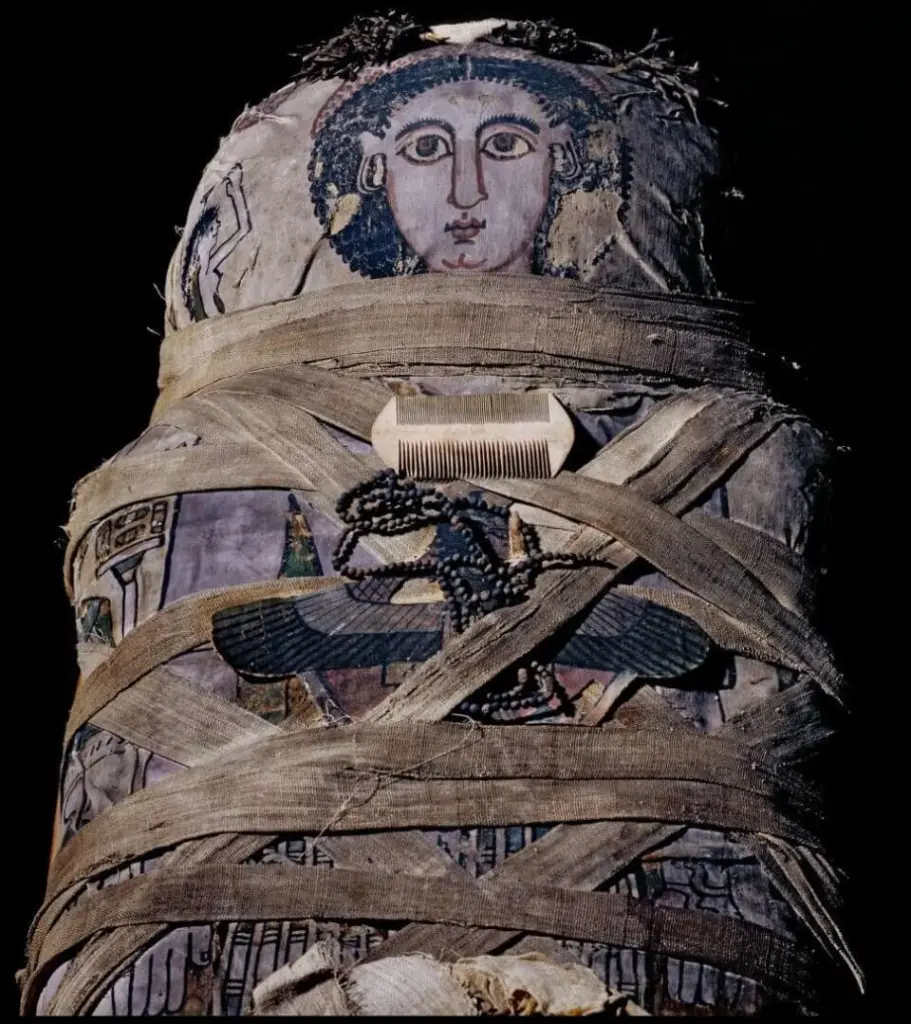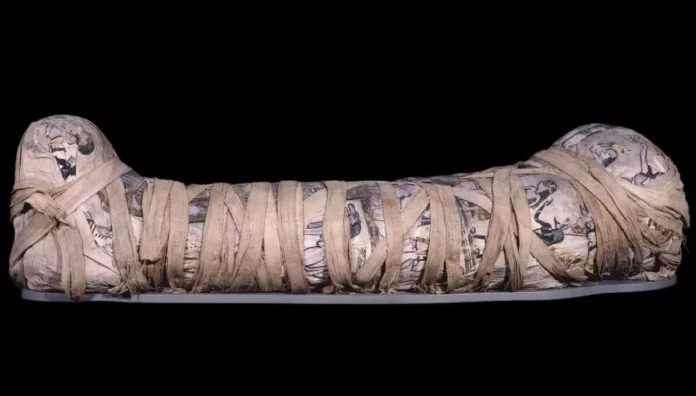This is the mummy of a 17-year-old young woman named Cleopatra, who lived during the Roman Period of Ancient Egypt, around 100-120 CE. She is identified as the daughter of Candace, a member of the Cornelius Pollius family, who was the Archon of Thebes under Emperor Trajan’s rule.
Inscriptions indicate that Cleopatra died at the age of 17 years, 1 month, and 25 days, and the density of her skeleton supports this claim. The cause of her death remains unknown, but it was not uncommon for young individuals to die in the ancient world. Egypt had six Cleopatras before the most famous one, Cleopatra VII, ascended to the throne. It is possible that this girl was named after the renowned ruler.

Despite having a Greek name and living under Roman rule, this Cleopatra was mummified according to Egyptian traditions. Her linen wrappings were beautifully adorned with images of Isis, Nephthys, Anubis, and the Goddess Nut, illustrating how the Egyptians maintained their cultural and religious practices despite the changing influences and styles brought about by Roman dominance.
The mummy of Cleopatra, the 17-year-old “daughter of Candace,” was discovered at Sheikh Abd el-Qurna, Thebes. Her mummy was accompanied by offerings, including a string of berries, a garland or wreath of tribute, and a wooden comb. Due to the dense material, likely plaster, beneath the bandages, very little of her body and limbs can be observed. The ribs and bones of her arms and legs show no fractures. There is an indeterminate opacity in the body cavity. Her arms are extended with the palms of her hands in contact with the outer aspects of her thighs. The left hip is dislocated, probably due to the tight bandaging. There are no lines of arrested growth.

This Cleopatra lived during the Roman Period, around 100-120 CE, and was found at Sheikh Abd el-Qurna. She now resides at the British Museum, cataloged as EA6707.




